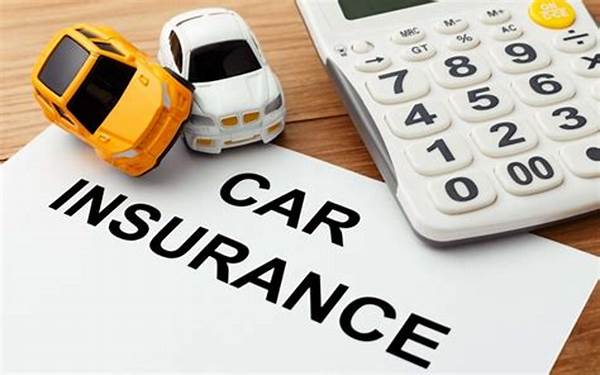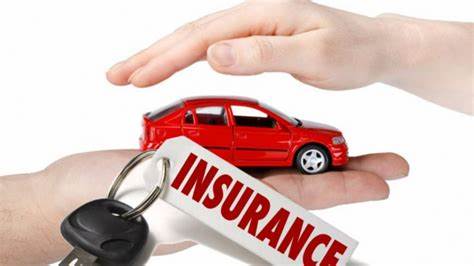Car insurance is an essential part of responsible vehicle ownership, offering a safeguard against unexpected expenses arising from accidents, theft, and other risks. Understanding the different types of coverage available and the benefits they provide can help you make informed decisions when choosing a policy. Whether you’re a new driver or a seasoned car owner, knowing what car insurance entails, why it’s necessary, and how to select the best coverage for your needs is crucial. In this article, we’ll explore the key benefits of car insurance, the different types of coverage available, and important factors to consider before purchasing a policy.
Why Is Car Insurance Important?
Car insurance provides essential protection, offering financial security in the event of an accident or other vehicle-related incident. Not only is it often a legal requirement in many countries, but it also ensures that you’re not left with crippling expenses after an accident. Whether it’s paying for medical bills, car repairs, or property damage, having a solid insurance plan in place helps mitigate potential financial losses. Without it, you could face enormous costs, including legal fees, repair expenses, or liability claims if you are found at fault in an accident.

The primary purpose of car insurance is to provide peace of mind, knowing that you are protected financially if something goes wrong on the road. Additionally, car insurance coverage can assist in fulfilling legal requirements and safeguarding both your vehicle and those around you.
Key Benefits of Car Insurance
- Financial Protection: The most obvious benefit of car insurance is the financial protection it offers. If you’re involved in a collision or if your car is damaged due to unforeseen events like theft, vandalism, or natural disasters, your insurance can cover the repair costs or replacement. This reduces the burden on your finances and helps avoid out-of-pocket expenses.
- Legal Compliance: In many jurisdictions, car insurance is mandatory. Most countries and states require drivers to have a minimum level of liability coverage to ensure that they can compensate others if they cause an accident. Without valid insurance, you could face fines, penalties, or even suspension of your driver’s license.
- Liability Protection: Car insurance helps cover your liability if you cause harm or damage to other people, vehicles, or property. Whether it’s medical bills for someone injured in a crash or repairing someone else’s vehicle, liability coverage ensures that you’re financially responsible for damages caused to others, as required by law.
- Accident-Related Medical Expenses: Accidents can lead to significant medical costs, especially if injuries are involved. Health insurance may not always cover all your medical expenses from an auto accident, but car insurance, specifically Personal Injury Protection (PIP) or Medical Payments (MedPay), can cover medical bills for both you and your passengers, no matter who was at fault.
- Peace of Mind: Car insurance gives you peace of mind while driving, knowing that you are protected financially. This is especially important for new or young drivers who may not have experienced accidents yet. The reassurance of being insured allows you to focus on driving, rather than worrying about the financial consequences of an accident.
- Protection Against Uninsured Drivers: In many cases, drivers may be on the road without adequate or any insurance. If you’re involved in an accident with an uninsured or underinsured driver, having Uninsured/Underinsured Motorist (UM/UIM) coverage will help protect you financially. This ensures that you’re not left paying for repairs or medical costs that should be covered by the at-fault party.
Types of Car Insurance Coverage
Car insurance policies vary depending on the type of coverage included in the plan. The most common types of car insurance are:
1. Liability Insurance
Liability insurance is the most basic form of coverage and is required in many states. It provides coverage for damages or injuries you cause to other people, vehicles, or property in an accident. Liability coverage typically includes two main types:
- Bodily Injury Liability: Covers medical costs and other expenses if you injure someone in an accident. It can also cover legal fees if the injured party sues you.
- Property Damage Liability: Pays for damage to someone else’s vehicle or property, such as a fence or a building, if you’re at fault in an accident.
2. Collision Coverage
Collision insurance covers the costs of repairing or replacing your car if it’s damaged in a collision, regardless of who is at fault. This type of insurance applies if you hit another vehicle or an object, such as a guardrail or tree. Collision coverage is typically required by lenders if you have a car loan or lease, as it protects their investment in the vehicle.
3. Comprehensive Coverage
Comprehensive coverage protects your vehicle against damages not caused by a collision. This includes incidents like theft, vandalism, natural disasters (hail, floods, fires), and hitting an animal. While not required by law, this coverage is recommended for those who want full protection for their vehicle, especially if it’s new or has a higher value.
4. Personal Injury Protection (PIP)
PIP is designed to cover medical expenses resulting from an accident, regardless of who is at fault. In addition to covering medical bills, PIP may also cover lost wages, funeral costs, and other related expenses. It is mandatory in some states, particularly those with no-fault insurance systems, and can be especially helpful for drivers without health insurance.
5. Uninsured/Underinsured Motorist Coverage
This type of coverage protects you if you’re involved in an accident with a driver who doesn’t have insurance or doesn’t have enough insurance to cover your medical bills and car repairs. Uninsured/underinsured motorist coverage can also apply if the at-fault driver flees the scene of an accident (hit-and-run).
6. Gap Insurance
If your car is totaled and you owe more on your loan or lease than the vehicle is worth, gap insurance can cover the difference. For example, if your car is worth $15,000 but you still owe $18,000 on the loan, gap insurance would pay the remaining $3,000. This coverage is especially useful for drivers who have a loan or lease on a new vehicle.
7. Medical Payments Coverage
Medical payments coverage, or MedPay, helps cover medical expenses for you and your passengers after an accident, regardless of who caused the collision. It can also cover other medical-related costs, like ambulance fees or funeral costs. This coverage is optional but can be valuable if you don’t have health insurance or if your health insurance doesn’t fully cover accident-related injuries.
Key Considerations When Choosing Car Insurance
When purchasing car insurance, several factors should be considered to ensure you choose the best policy for your needs:

- State Requirements: Understand the minimum coverage requirements for your state, as insurance laws vary by region. At a minimum, most states require liability insurance, but additional coverage like PIP or Uninsured Motorist coverage may be necessary.
- Your Vehicle’s Value: Consider the value of your car when deciding what type of coverage to purchase. For older cars, you may not need comprehensive or collision coverage, as the cost of coverage may outweigh the potential payout.
- Your Driving History: Drivers with a clean record will typically pay less for insurance. If you have a history of accidents or violations, you may need to shop around for the best rates, or consider a policy with higher premiums for better coverage.
- Deductibles and Premiums: Choose a deductible that you can afford to pay out of pocket if you need to file a claim. A higher deductible typically results in a lower premium, but make sure you can afford the deductible in case of an accident.
- Additional Features and Discounts: Many insurance providers offer discounts for things like bundling policies, having a good driving record, or driving a car with safety features like airbags and anti-theft devices. Ask about available discounts to help reduce your premium.
- Customer Service and Reputation: Research insurance providers to ensure they have good customer service and a reputation for handling claims efficiently. Read customer reviews, check ratings with agencies like J.D. Power or the Better Business Bureau, and talk to friends or family members for recommendations.
How to Save Money on Car Insurance
- Compare Quotes: Get quotes from multiple providers to ensure you’re getting the best price for the coverage you need.
- Raise Your Deductible: Increasing your deductible can lower your premium, but be sure you can afford to pay the higher deductible in case of a claim.
- Bundle Policies: Many insurance companies offer discounts if you bundle car insurance with other policies, such as home insurance.
- Take a Defensive Driving Course: Some insurers offer discounts for completing a defensive driving course, which shows that you’re a safer driver.
- Maintain a Good Credit Score: Many insurers use credit scores to determine premiums, so maintaining a good score can help you secure lower rates.
Conclusion
Car insurance is more than just a legal requirement—it’s a crucial aspect of protecting yourself, your vehicle, and others on the road. With various types of coverage available, it’s important to understand your needs and choose a policy that offers the right level of protection at an affordable price. By considering the factors that influence car insurance rates and looking for discounts, you can find a policy that offers financial security and peace of mind while driving. Don’t forget to review your policy periodically to ensure it still meets your needs as your circumstances change.

Leave a Reply